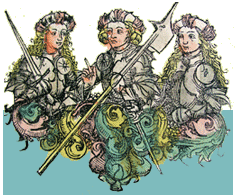Nico Muhly: the power of Tavener’s soul music
from Wednesday, November13th of the year2013.
The following appeared in The Guardian 13 November, 2013:
As a chorister, I always looked forward to singing Tavener’s Hymn to the Mother of God. It’s a simply constructed piece: the choir is split up into two parts. The left side sings identical music to the right, but slightly delayed. The brilliance of the construction is that the chords, no matter how consonant, rub up against their twins lagging behind, creating a thick and sacred texture. It is delicious to hear, and even more toothsome to sing. Much of Tavener’s music – including the longer and sonically more complicated works – is constructed in “visible” ways: the skeleton of the compositional structure is part of the listener’s interface with the piece. This is ecclesiastical architecture at its best and most sublime, where the structure soars and reassures at the same time.
To study Tavener’s music is to immerse oneself in the subtle vocabulary of stillness and slow change. I’ve always found a connection between the deliberate simplicity of his melodic sensibilities and the melancholic strophes of Vaughan Williams’s coronation motet O Taste and See, which never quite commits to a tonal focal point as much as to a horizon line towards which the listener glides. Similarly, in Tavener’s wonderful Song for Athene, pastoral melodies in various modes unfold over a single drone on the note F; there is less of a sense of melodic development and more of a sense of an organic holding pattern: birds circling in the distance. At a certain point, the camera zooms in, and an inexorable and slow crescendo points us towards an inversion of the drone – the floor is now the ceiling – and a shimmering climax. The trick only works because of his skill in deploying it.
It is difficult to overstate the effect Tavener’s music has had on younger generations. There is much to be learned compositionally from careful study of his patience and surprise revelations, but I am more interested in how singing his music has enabled a generation of musicians to really enjoy stillness and circular structures. Much of the modern Anglican choral tradition is built on glorious, directional phrases that coddle the text. Tavener’s music usually insists on simpler textures: a drone, and an economy of one or two notes per syllable (or, in more extreme examples, one syllable stretched over many, many, many notes). To sing this music is to learn how to resist romantic phrase-shaping, and to make the beauty in expression more to do with what is withheld than with what is presented. This kind of music-making creates thoughtful musicians. It is difficult to imagine that the choristers of Durham Cathedral who had to figure out what to do with Tavener’s 11-minute Ikon of St Cuthbert of Lindisfarne didn’t then return to their diet of Byrd and Tallis with a heightened sense of how to achieve maximum impact through understatement.
I met John Tavener once, a few years ago, at London’s Barbican. He had been unwell, so it was solemnly exciting to see him make his way gingerly down the shallow and wide stairs. Along with six or seven other composers, we’d been asked to reinterpret various works by Handel. As is typical of these variety shows, we all made these fussy pastiche things, except for Tavener, who wrote a very simple piece called Little Reliquary for G.F.H. A simple melody in the voice, imitated, if my memory serves, by an oboe: a personal, generous, and gorgeously oblique tribute to what makes Handel’s own music so luminous. The rest of us had skittered about the surface of Handel’s originals, but Tavener had plunged directly into the cold and honest stream that feeds the pond.
His death at 69 is a sad shock. After his most recent illness, it seemed as if his compositional output had entirely stopped – he described it in the press as a crisis of faith, as a sort of emptiness and silence. He wrote his way out of it, though, creating a series of works in a relatively short time. I happened upon the score to one of these later pieces in my publishers’ offices in London last year. It was scored for voices and three string quartets. It didn’t seem, as is the way with some composers’ late-period works, like a sacred relic or a death-mask. Instead, it seemed like a transparent and honest piece of work heralding the beginning of another decade of innovation, clarification, and sacred simplicity. In writing this, I realise how much he has given us both as composers and interpreters; I mourn the music he left unwritten, but am so happy to have grown up with so much of it.

4 Comments
November 15th, 2013 at 11:12 am
Enjoyed this tribute very much. Learned a couple things, too!
November 15th, 2013 at 7:19 pm
Have been listening to a number of Tavener’s pieces since reading this and it has been a revelation. Thanks for the eloquent eulogy and introduction.
November 21st, 2013 at 5:33 am
[…] John Tavener’s Soul MusicNico Muhly | 13th November 2013Expert appreciation of Tavener’s compositional style, and its influence. “This kind of music-making creates thoughtful musicians. It is difficult to imagine that the choristers of Durham Cathedral who had to figure out what to do with Tavener’s 11-minute Ikon of St Cuthbert of Lindisfarne didn’t then return to their diet of Byrd and Tallis with a heightened sense of how to achieve maximum impact through understatement.” […]
November 23rd, 2013 at 1:32 pm
“Maximum impact through understatement..” Wow, now there’s a sentiment that surely needs to be heard and repeated. So much of our world is a bombardment of facts, information, and overkill – it’s refreshing to return to the understatement, the subtle, the quiet, and the introspective. I really needed to be given this thought today – thank you for posting!
http://pianosheetmusiconline.com/